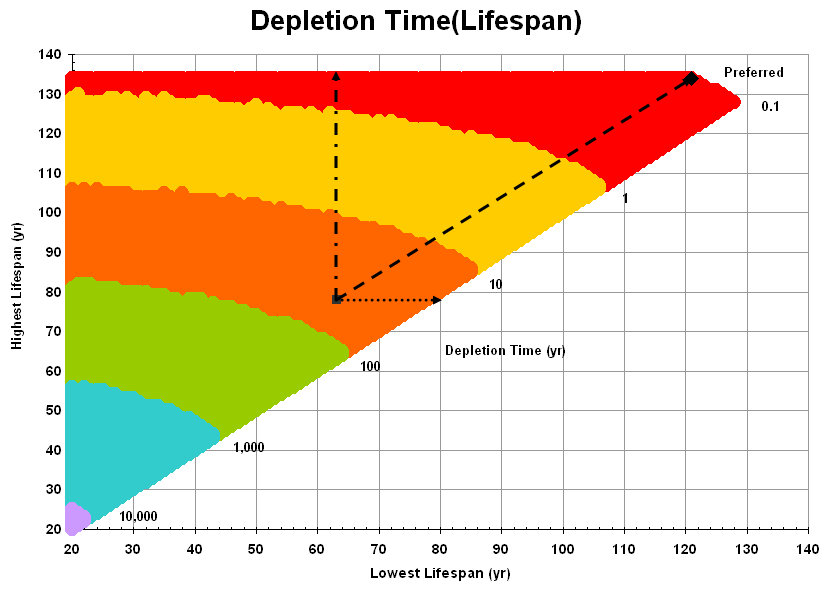
The Ideal Path
On a topographical map where “altitude” is replaced by the time it would take for the world’s population to deplete its usable resources, and “latitude” and “longitude” are replaced by minimum and maximum life expectancy, respectively, we currently sit near the base of an elliptically shaped mountain bounded by a right triangle. Two legs of the triangle meet at the peak of the mountain, forming a 45 degree angle. Depletion time (altitude) decreases exponentially as we move in any straight path away from the peak.
The world’s population prefers to be as low on the mountain as possible, which happens to be in a direction directly “down” from our present position. Very much like sliding down a real mountain, our speed increases as we move along this ideal path; except that we must provide the “gravity.”
The two most prominent competing ideologies in economics and politics appear to favor paths different from the ideal one. In the United States, “conservatives” prefer to increase the maximum life expectancy; while “liberals” want to increase the minimum life expectancy (keeping in mind that happiness – life satisfaction – is proportional to life expectancy). These alternate paths are at a right angle to each other on our topographical map. The fact that the ideal path bisects this angle (at 45 degrees) may explain why a “centrist” approach to economics and politics is often considered the most successful in historical hindsight.
This entire discussion has presumed a fixed (maximum) amount of resources as well as a constant population; or put another way, a fixed point in time. For our map to be accurate, any movement would need to be instantaneous. In reality, any change in the amount of resources will result in a proportional offset for all altitudes. If we choose to sit at a given spot (consuming a constant amount of resources per year), all altitudes will be offset by an amount proportional to the amount of time we sit there. Population changes are a lot more complicated, since population tends to vary proportionately to the square root of consumption, and radically decreases as the amount of consumption approaches the amount of resources.

For more, see: Comfort, Optimizing Happiness.
© Copyright 2009 Bradley Jarvis. All rights reserved.